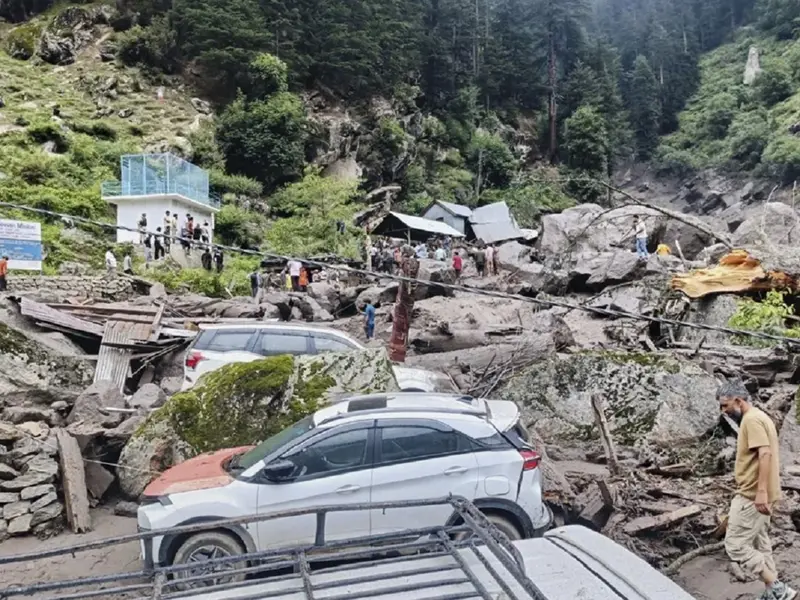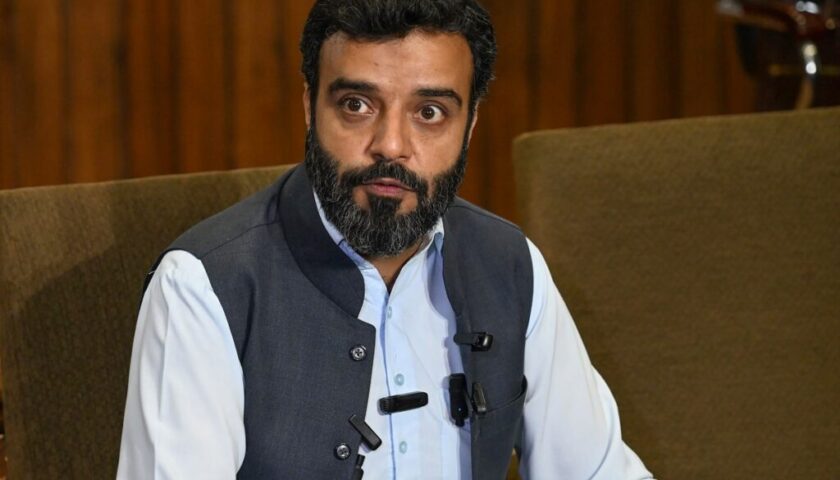A Valley on Edge: The Seventh Flood Scare Since 2014
By: Javid Amin | 07 September 2025
In early September 2025, the city of Srinagar was once again gripped by fear. The Jhelum River, Kashmir’s lifeline but also its greatest threat, surged past danger marks at Sangam and Ram Munshi Bagh.
Sirens echoed across low-lying neighborhoods. Mosque loudspeakers urged people to move to safety. Families hurriedly shifted valuables to higher floors, while shopkeepers raised goods above the ground.
For many, the scenes were eerily familiar. This was not the first time Kashmir was brought to the edge of a watery abyss. It was the seventh major flood scare since 2014, when the Valley suffered its worst deluge in living memory. That year, the Jhelum swelled to unimaginable levels — submerging Srinagar, displacing nearly 1 million residents, and claiming more than 200 lives.
Despite the trauma of 2014 and an expenditure of ₹1,500 crore through the Jhelum and Tawi Flood Recovery Project (JTFRP) and the Comprehensive Flood Management Plan (CFMP), Kashmir remains perilously exposed. The Valley’s geography, compounded by urban expansion, encroachment, and governance inertia, continues to set the stage for disaster.
The big question today is: Have we learned any lessons since 2014 — or are we simply waiting for history to repeat itself?
Geography of Vulnerability: A Bowl With No Drain
To understand Kashmir’s flood crisis, one must first understand its geography.
The Jhelum River originates from Verinag in South Kashmir, meanders through the Valley, and empties into Wular Lake in the north before flowing into Pakistan. For centuries, it has irrigated Kashmir’s fertile lands and provided water for daily life. But its blessings come with a curse: the river has low natural capacity to handle excessive rainfall.
-
Danger Marks:
-
Sangam (Anantnag): 25 feet
-
Ram Munshi Bagh (Srinagar): 21 feet
-
-
2014 Reality:
-
Sangam: 34.7 feet
-
Ram Munshi Bagh: 29.5 feet
-
When the Jhelum overflows, the bowl-shaped topography of the Valley traps water, making drainage slow and difficult. Unlike plains where floodwaters disperse quickly, Kashmir’s waters stagnate. Tributaries like the Vishow, Lidder, Rambiara, and Doodh Ganga further swell the basin, pushing embankments to breaking point.
This unique geography makes Kashmir naturally prone to floods — but what amplifies the risk are man-made choices.
Urban Expansion: Paving Over Nature’s Buffers
In the past few decades, Kashmir’s natural buffers — wetlands, flood channels, and riverbanks — have been steadily consumed by unchecked construction and urbanisation.
Shrinking Wetlands
Wetlands like Hokersar, Wular, and Anchar were once nature’s shock absorbers. They stored excess rainwater and acted as safety valves during floods. But relentless landfill, encroachment, and road building have reduced their capacity dramatically.
-
Hokersar wetland, once spread over 13.5 sq km, is now less than half its size.
-
Wular, Asia’s largest freshwater lake, has shrunk by 27 sq km in the last century.
When these wetlands vanish, floodwaters have nowhere to go — except into homes, fields, and streets.
Encroached Flood Channels
The Flood Spill Channel (FSC), built by the Dogra rulers in the 1900s to divert excess water from the Jhelum, has been choked by housing colonies, shopping complexes, and garbage dumping. Once designed to carry 20,000 cusecs of water, it now struggles with less than half.
Expanding Srinagar
Srinagar’s population has surged, but urban planning hasn’t kept pace. Housing colonies and commercial hubs have mushroomed on floodplains, wetlands, and riverbanks. In effect, the city is building its future on water’s path — and when floods arrive, the cost is catastrophic.
Promises That Sank With the Water
After the 2014 disaster, governments made ambitious promises:
-
Dredging the Jhelum to increase carrying capacity
-
Strengthening embankments with modern materials
-
Restoring wetlands and flood channels
-
Installing real-time flood warning systems
-
Fair rehabilitation and compensation for victims
But eleven years later, the ground reality is sobering.
-
Dredging began with enthusiasm but soon stalled due to disputes with contractors and lack of follow-up.
-
Embankments remain weak and breach-prone.
-
Wetlands continue to shrink, despite being declared protected.
-
Flood gauges often malfunction, with alerts delayed or ignored.
-
Rehabilitation is uneven — many families still complain of incomplete compensation since 2014.
Even current CM Omar Abdullah admitted recently:
“It seems that 11 years have been wasted by previous governments. Questions need to be asked about what has been done in the last 11 years.”
This blunt admission sums up Kashmir’s governance paradox: lots of paperwork, little real progress.
Expert Warnings Ignored
Environmentalists and disaster experts have been sounding alarms for years — but their words are often sidelined.
-
Sunita Narain (2014):
“Was this a natural disaster—or could better planning have prevented it?” -
AP Analysis (2025):
“Human factors like rapid urbanisation, deforestation, and poor infrastructure worsen the damage.” -
Kashmir University Hydrology Department (2023):
Warned that “the FSC is no longer capable of handling even a moderate flood.”
Yet, every scare is followed not by reforms but by resignation. Each near-miss is seen as luck, not a warning.
2014 vs 2025: A Comparative Snapshot
| Year | Jhelum Level at Sangam | Jhelum Level at Ram Munshi Bagh | Impact |
|---|---|---|---|
| 2014 | 34.7 ft (Danger: 25) | 29.5 ft (Danger: 21) | Srinagar submerged, 1M displaced, 200+ dead |
| 2015–2024 | Repeated scares, near-breaches | Frequent panic alerts | Wetlands shrunk, FSC clogged |
| 2025 | 16.05 ft (Danger: 25) | 18.7 ft (Danger: 21) | Scare avoided — but 7th close call since 2014 |
The numbers reveal a frightening trend: the Valley is one heavy rainfall away from another disaster.
Voices from the Ground
Behind the statistics lie human stories.
-
Farmers in Anantnag and Kulgam watched their paddy fields drown this September. “We invest everything in the crop — fertilizers, labor, seeds. In one night, it is all gone,” said Abdul Rashid, a farmer from Khudwani.
-
Shopkeepers in Srinagar’s Lal Chowk recalled how 2014 submerged their shops. “Every rain feels like a repeat. We cannot sleep when the Jhelum rises,” said Bashir Ahmad, a trader.
-
Students in Pulwama said they missed classes due to repeated flood alerts. “Our future is uncertain every monsoon,” said Fatima, a Class 10 student.
These voices highlight a painful reality: floods are not just environmental events, but social, economic, and psychological shocks.
What Needs to Change: A Reformist Roadmap
To prevent another catastrophe, Kashmir needs more than promises — it needs a comprehensive reform plan.
✅ Infrastructure Overhaul
-
Complete dredging of Jhelum and tributaries
-
Strengthen embankments with modern geo-materials
-
Expand drainage networks in urban zones
✅ Wetland Restoration
-
Reclaim Hokersar, Wular, and flood channels
-
Ban construction on floodplains
-
Incentivize eco-restoration projects with community participation
✅ Real-Time Monitoring
-
Install automated flood gauges across tributaries
-
Launch mobile alert systems linked with weather forecasts
-
Train community-level disaster response teams
✅ Policy & Accountability
-
Transparent audits of JTFRP and CFMP spending
-
Public dashboards for flood preparedness
-
Civil society inclusion in planning committees
Editorial Takeaway: Kashmir Can’t Afford Another 2014
Kashmir’s flood vulnerability is not just natural — it is man-made. Climate change may intensify rainfall, but poor planning, encroachments, and governance inertia amplify the destruction.
The Valley has been given repeated warnings — seven since 2014. Each was an opportunity to act. Each was squandered.
This is not just a climate story. It is a governance story. Unless leaders move from speeches to solutions, the Valley will drown again — in water, and in neglect.
The water is rising. The warnings are loud. The time for action is now.




